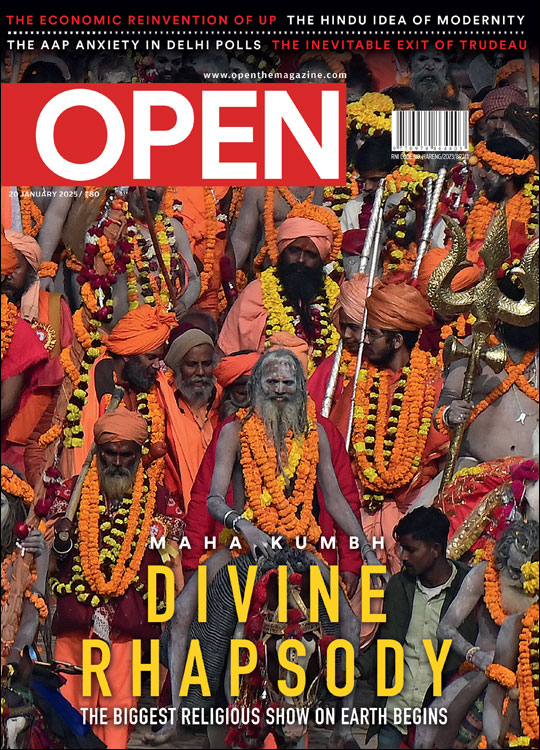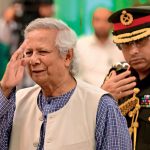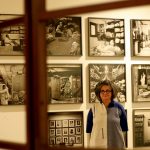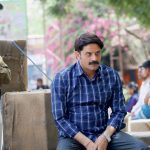Local and Limitless
Community art initiatives are gaining momentum
 Avantika Bhuyan
Avantika Bhuyan
 Avantika Bhuyan
|
21 Mar, 2018
Avantika Bhuyan
|
21 Mar, 2018
/wp-content/uploads/2018/03/Locallimitless1.jpg)
SINCE JUNE LAST year, a small recharge shop in Khirkee Extension, Delhi, seems to have acquired strange transformative powers. To a newcomer, it might seem that anyone who enters the space undergoes a personality change—magically metamorphosing into a performer. A young yoga teacher turns into a proficient Bhakti artist. A seemingly coy student suddenly starts Bboying. A shy Ivorian national starts spouting free verse in French. On looking closer, one realises that the shop too is not what it appears to be–-it doubles up as a recording studio, complete with Chroma Key curtains, where the local residents can record bhajans, hip-hop, racy Bhojpuri songs, short messages, or whatever their hearts desire. One of the regulars to this performing booth is a 19-year-old rapper, known as Anubhav Saini in the real world, but who prefers his stage name, Mic-Killer. As soon as the camera is turned on, his accent acquires an American lilt and his actions closely mimic those of his idol, Eminem. Once edited, his video is uploaded, for wider reach, onto the YouTube page of Phone Recharge ki Dukaan.
This is a unique long-term community art project, led by architect Swati Janu, which has been giving locals such as Saini the freedom of self-expression through a unique process of media co-production. It seems to have instilled them with a certain confidence, and they have begun to seek the artist within. “I feel a sense of pride. In Class VI, when I first began to remix rap songs, I got beaten up by the class teacher. But I persisted and started creating original content. And now, I have a platform where I have the freedom to be myself,” says Mic-Killer. He has also forged friendships with African rappers in the neighbourhood such as Ibis and Romeo, and they often hold jamming sessions.
The urban village of Khirkee has been witness to several such community art initiatives in the past couple of years. There was Khirkee-Yaan, by artist Shaina Anand, which explored the open circuit TV system as a device for communication, feedback and intervention within the Khirkee environs. Then, one saw Telephone Pyaar in 2009, by Abhinandita Mathur, in collaboration with five to seven young people about their idea of love. The neighbourhood soon got a dedicated newspaper, Khirkee Voice, produced quarterly by artist and researcher Malini Kochupillai, which now serves as a platform for writings and photos by residents about their daily lives. Each initiative has sought to weave together a collective narrative about the culturally diverse community of regional and international migrants who dwell here.
As one views the videos of the projects on YouTube and speaks with residents about them, a different side of Khirkee appears—away from the dust and grime of construction, one separated from the xenophobic sentiments fanned by politicians about the immigrants living here. This is a lighter side, a fun side, full of dance, music and art, and a more inclusive side, which doesn’t discriminate on the basis of gender or race. As one walks around, the alleys of Khirkee don’t seem so cramped anymore; rather, they seem full of stories and storytellers.
Just like the wires that crisscross overhead, forming an awning, stories here too bisect and intertwine, with one leading to the other.
The entry point into the neighbourhood, and into any art-based narrative about Khirkee, is through a tiny lane, which some of the locals call ‘Khoj lane’—perhaps in acknowledgement of the studio’s growing significance in the area. Khoj has come a long way from 2002, when it made Khirkee its home and supported a lot of projects such as those by Janu, Anand and Mathur. Ever since, the artists-in-residence have interacted with the local community in some way or the other.
However, many believed that participatory art couldn’t acquire any meaning in a mere two-to-three-month residency. There needed to be a longer, more sustained engagement with Khirkee, in order to truly create ‘community art’.
“So, two years ago, we decided to support long-term projects. How could one not engage with the local issues? It was our responsibility. One of the first ones was Sreejata Roy’s mapping of the neighbourhood to look at women in public spaces. Then came Khirkee Voice. In the next phase, we will have writing and photography workshops for the paper,” says Pooja Sood, founding member and director, Khoj international Artists’ Association. In December 2017, the studio also hosted the first-ever Khirkee festival to celebrate the cultural multiplicity of the neighbourhood. One saw short plays by young adults, made in collaboration with members of the Aagaaz Theatre Test, short videos from Phone Recharge ki Dukaan, pop-up kitchens centred on Afghani, Somali, Cameroonian and Bihari cuisine, and a performance by The Khirkee Ensemble, an international band of musicians from the area. “These little moments are very important. We reached out to organisations such as Gati and Deepalaya working in the area, as well. Next year, we plan to make it bigger,” says Sood.
Khirkee’s location in Delhi, opposite contrasting consumerist spaces, makes it ideal for the initiative. It is also a rich and vibrant neighbourhood for artists to engage with people from culturally diverse backgrounds
DURING THE FESTIVAL, one also got to see wonderful murals of girls playing football peeking out from behind a car park. There was another one, of women having tea, above an actual tea stall. These had been painted by the Khirki Collective, a group of 10-11 young adults in the area, which has been holding dialogues with men in the lanes of the locality, and undertaking research to understand how women negotiate public spaces. Based on their experiences, the youngsters have even created a map of the village, featuring sketches and landmarks such as biryani gali, sunsaan gali, and more. Many personal narratives of the women entrepreneurs in the locality are also published in the magazine, Mulaqatoki Galiyan, which is part of an ongoing long-term project, Mobile Mohalla, supported by the Kiran Nadar Museum of Art (2016-ongoing). Initiated by Roy and Mrityunjay Chatterjee, who together form the artist collective Revue, the initiative seeks to create a platform for young adults from different backgrounds to interact with one another. It all started with the duo’s earlier project, Network and Neighbourhood, supported by Khoj International Artists’ Association( 2014-16). Since then, they have created several collaborative projects with the community, including with the women in the area on how they negotiate public spaces which are dominated by men. By conducting regular public readings in dhabas and public parks, rallies and mural paintings, Revue and Khirki Collective are hoping to bring women out of their isolated and invisible existence by giving them a voice and helping them reclaim their own space in public.
The members of the Collective often meet at Roy’s Living Lab, a spartan space located in the heart of the neighbourhood. After getting lost many times over, one finally arrives at a white door, leading to the ground floor space. The only adornments here are recipes for Qabuli pulao and kebabs, pasted onto the walls, featuring notes and small illustrations. A couple of Congolese women are sitting in one of the rooms, deep in discussion. “They are here for a workshop. Food is integral to the social fabric in this neighbourhood, and we are creating food maps and books with regional and international migrants that live here. These are more than just recipe books, rather they are about these women’s negotiations with and for food. We also organise pop-up kitchens in Khirkee and outside,” says Roy. In some ways, these food maps showcase Khirkee’s ever- changing demographics—starting with the eateries catering to labourers from Bihar who migrated to the settlement for work when the malls and big corporate hospitals were being built. Soon, appam, dosa and idli food joints were added to this culinary landscape, once nurses from Kerala moved here to work in the hospitals closeby. And finally, when immigrants and a young working population came in, Chinese dhabas and fast food joints started proliferating.
As one sits at one such dhaba, to piece together the bits and pieces from the various projects, one wonders: why Khirkee? What makes it such a fertile ground for art-driven ideas, as opposed to any other urban village in Delhi—say like a Shadipur Depot or Dakshinpuri. One factor, could be its location, right opposite contrasting consumerist spaces. It’s also a rich and vibrant neighbourhood for artists, geographers and architects to engage with people from culturally diverse backgrounds, interacting with these spaces. “Secondly, the gentrification that has taken place in Hauz Khas and Shahpur Jat has not happened here yet,” says Janu, whose practice is based on self-built housing and communities in informal settlements. “That could be because of the transient nature of its tenant population and the strength of the local community.” The demographics here keep changing, more and more layers keep getting added. “Khirkee is like a sponge, it keeps absorbing people from all backgrounds. Apart from students, artists, immigrants and refugees, you find a strong transgender community here, who, perhaps, finds this space more welcoming as compared to others,” says Janu. But there is a flipside too. There is friction because of these different backgrounds. It is these abrasions that these projects seek to address. “When you create something, it goes on to create empathy. By using arts, we look at what we can do together and in turn learn about each other,” she says.
This sends me on a search for other neighbourhoods across the country that may serve as a muse for artists and scholars. Immediately, Dharavi comes to mind. The cluster, with its population of migrant labourers, entrepreneurs, bag makers, tailors, tour guides and fixers for international filmmakers, presents just as vibrant a social tapestry for artists. One of the most significant initiatives here is the Dharavi Art Room, started by Himanshu S when he was a young arts student way back in 1998. Within this vibrant room in India’s largest slum, women and children come together to create art and get rid of their anxieties and frustrations. I call Himanshu, just as he is finishing his session with kids at 11.30 am, and ask him how the Dharavi Art Room has changed in the past decade. “The number of kids has grown. The possibilities of all that can be achieved has increased. We are having a lot more exhibitions both inside and outside Dharavi, such as the recent one in Kitabkhana,” he says. But the most important part, for him, is that some of the children have joined the art room back, and a few more are getting ready to do so—they will run the space themselves in a couple of years.
Within a vibrant room in India’s largest slum in Mumbai, women and children come together to create art and get rid of their anxieties and frustrations
For one, the art room has transformed a group of women who were earlier invisible entities, much like those in Khirkee, into photographers. “Earlier, mothers wouldn’t leave the house, except to pick their kids up. Even though they were active financial contributors to the household income— many did home-based work such as papad making and stitching—but they didn’t have any stake to ownership in the house. So, we started doing home visits. Some of them expressed an interest in photography,” says Aqui Thami, who joined the art room five years ago and conceptualised and helped set it up for girls and women.
Today, from photographing small objects in their homes to overcoming their inhibitions to shooting outside Dharavi, these women have come a long way. “They are now getting jobs with NGOs. With the money from selling their photographs, they are buying mobile phones, new saris, and more. Within their families too, their position has changed. Their kids and husbands are looking at them with more respect,” she says. Thami is now working on a new programme, for adolescent girls, which will start in June this year. In the past couple of months, Himanshu and Thami started noticing that young girls were dropping out of the art room. Dharavi, which sees a constant influx of migrants, was being looked upon as unsafe for girls. “So, we thought if they can’t come to the art room, let’s get the art room to them. We have, in the past, worked with schools for low-income families. These are small, cramped, with no space for creativity. So, now we have created an art room in these schools for girls, who get to spend an hour there,” she says.
The other urban space, which is now seeing a great number of community art initiatives is the neighbourhood around Pepper House in Kochi. This is where the Kochi Biennale Foundation, or the KBF, conducts its residencies and workshops for artists, school children and women. “A lot of our projects are site-specific. But we don’t encourage artists to come with a pre-conceived notion of a project and then simply use this space to execute it. We encourage research and deeper engagement with the local community,” says Gautam Das, assistant director, programmes, KBF.
As we speak, an artist from Assam is working with paddy farmers living around Fort Kochi. “Back home, he works with the agrarian communities, so this engagement is a natural extension of his practice. There is also a strong hand-weaving community near Kochi. An American artist, who had come for a sound workshop, is now travelling to an old weaving centre, 30 kilometres north of Kochi, to work with the community there,” he says. Artists are being greeted with far most hospitality now, than perhaps was possible a decade ago. By virtue of the Kochi Biennale being held in the city, the local community has become more receptive to art initiatives and projects.
One question that I pose to nearly everyone involved in such community art initiatives is this: how much of a difference do these really make to local residents? And nearly everyone asks me to reverse the question, and look instead at how artistic practices are being enriched by their being based in such neighbourhoods. One of the most succinct answers comes from Aastha Chauhan, previously leader of the Community Arts programme at Khoj studios and now a manager of sorts of Khirkee 17, a group of five hip-hop artists, who sustain their love for Bboying by selling t-shirts to music bands. “What do artists, with privileges, get when working in the neighbourhood? A lot of art practices are based on seeing the neighbourhood as a problematic area and themselves as problem solvers. We need to get rid of this God complex,” she says. Himanshu concurs: “This area has done a lot for me. I would have been an angry, crazy, sad person otherwise. I come from a similar background and the people here have given me a lot of hope. I don’t need all of them to become artists, just individuals who are stronger at solving and resolving issues.”

/wp-content/uploads/2025/01/Cover_Kumbh.jpg)













More Columns
What does the launch of a new political party with radical background mean for Punjab? Rahul Pandita
5 Proven Tips To Manage Pre-Diabetes Naturally Dr. Kriti Soni
Keeping Bangladesh at Bay Siddharth Singh